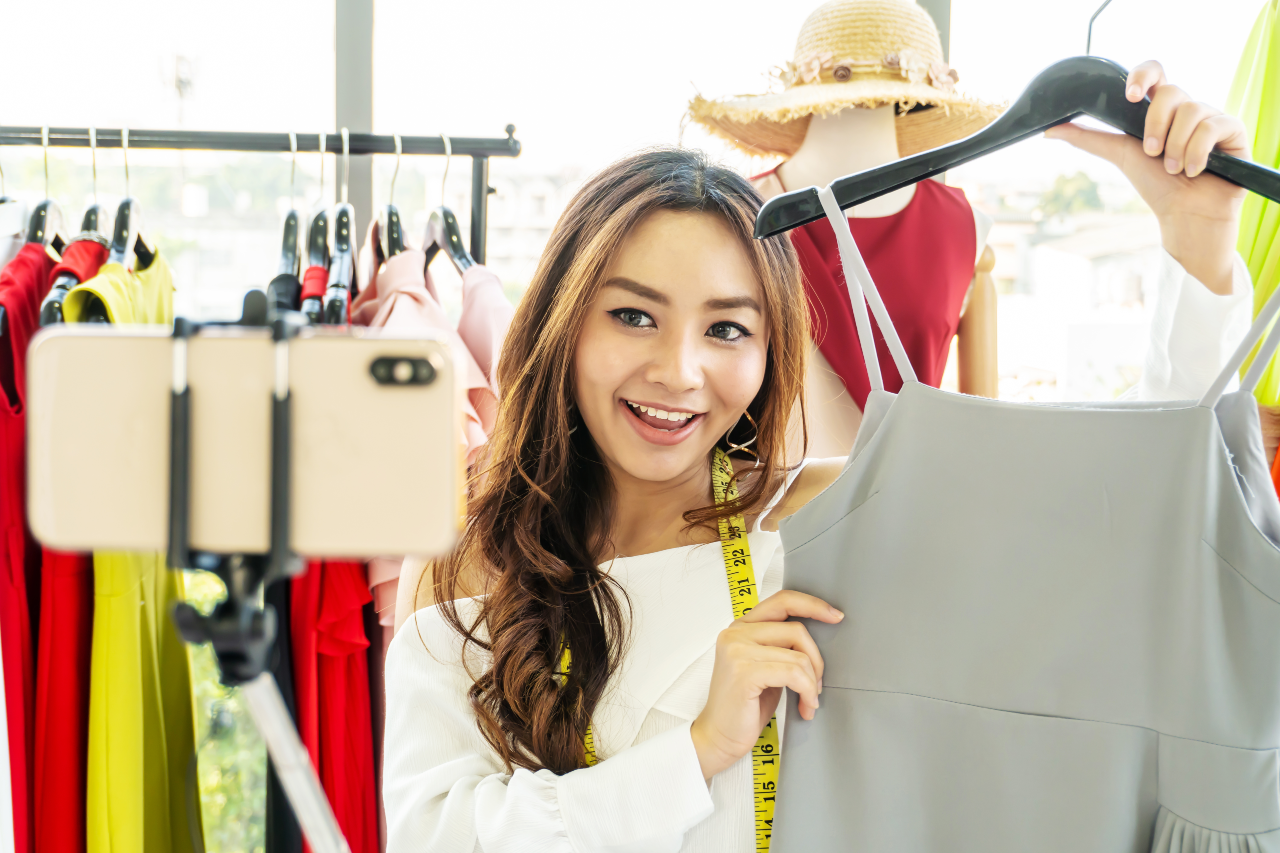Have you ever made use of a personal shopper? Maybe you’ve sought advice in a store and at least had a taste of the personal shopping experience. According to research, personal experience is key to creating a great shopping experience. 80% of shoppers are more likely to buy from a company that offers personalised experiences.
With the fashion industry in constant change we were curious to consider how the shifting sands of the sector and the demise of the high street could impact personal shopping. Typically, stores that offer personal shopping can see a 100% increase in spend from customers. Once presented with carefully curated pieces by an in-store expert, shoppers are willing to pay for the pieces they might otherwise miss or overlook if shopping alone. So, given the importance of personal shoppers to the fashion industry we wanted to look at the ways they are currently adapting to serve the stores, maintain their own independent business and continue to serve the changing needs of the clients. But more than that, we wanted to find out how the industry might shift in the years to come and how Personal Shoppers can use technology to stay ahead of the curve.
History of personal shopping
Let’s face it, once the exclusive preserve of the super rich, personal shopping is now within reach of the average person. As a service, it was initially established by the biggest clothing retailers to better serve their top spenders. However, in 1973 Saks of Fifth Avenue recognised that regular shoppers were short on time and needed a complex array of outfits that could help them navigate the new working week. In the 70s women increasingly needed suitable office wear, luncheon outfits, weekend-wear, dresses and practical clothing for chasing after children. As the roles of women shifted and expanded so did their wardrobe. Suddenly, personal shopping was seen as an essential part of the shopping experience for busy working women. An in-store professional, familiar with every garment in a vast shop, could pre-assemble looks based on a brief or accompany the shopper around the store offering advice. The notion of personal shopping shifted from being a luxury of the super rich to a worthwhile time saving option for the busy professional.
Personal shopping today
Leap forward to the 21st century and now, personal shopping is offered by most department stores and high street brands. It can be offered for free as part of a committed spend or else charged as a unique service in its own right. Personal shoppers are also now operating entirely independent of a single retailer and are tasked with travelling the world on behalf of their clients to find the best pieces direct from top fashion showrooms, little known boutiques and vintage stores that only they know about.
The most recent factors to impact fashion retail and personal shopping have been the shift to eCommerce, the increase in home workers, the drive for sustainability and the global cost of living crisis. Each of these is reducing the number of shoppers physically visiting stores and some factors are putting them off shopping all together. Personal shopping has to be able to serve as an added incentive and also meet the needs of people who want to shop from home. Just as Telemedecine had made it possible for doctors to consult with patients through a secure video feed, personal shoppers also have to make the intimate personal shopping experience something that feels natural on camera.
Latest developments in personal shopping
Launched in 2020, British company Conferwith offers integrated video chat for online shoppers to connect to staff in showrooms. Clients include home furnishing stores, skincare brands and luxury jewellers who all sought to maintain a personal shipping experience during the pandemic. The simple on screen pop-up provides a video link to a real person to answer questions and even demonstrate items. While stores had to remain closed, this kind of technology allowed many industries that are better served by human interactions to continue.
In the most part, personal shopping is about developing a rapport, interrogating a customer’s needs and intuiting key information that might not be spoken aloud. To do this properly, personal shoppers need face time with their clients and need to be able to engage in free flowing conversation. Things that are not well served by emails or phone calls. Video calls are already a vital part of the new personal shopping experience alongside physical appointments but can they become more central and allow personal shoppers to attract new clients they never meet in person?
Lulu Lemon’s digital concierge service is offering exactly that. A new spin on personal shopping, the retailer offers 30 minute Zoom sessions to consumers to walk them through new items and encourage continued spending. Other retailers including Ikea and Apple have turned to augmented reality to allow home shoppers to visualise their potential purchases in their own home environment. UK start up Zyler are pioneering a simple phone photo capture tool that allows shoppers to see clothing with their own head and shoulders naturally inserted into the apparel. More advanced systems will allow virtual clothing to be projected onto the shoppers body and give an approximation of the changing room experience. Lastly, virtual tools such as Sizer allow for the capture of safe, secure and accurate body measurements using just a smartphone camera. Allowing users to share precise measurements to their personal shoppers.
Livestreams and personal shopping
All these ideas can be configured to serve the changing needs of personal shoppers. Factoring in the growth in social media brands and individual personal shoppers can use livestreams to turn personal shopping into a community experience.
There’s that terrifying word: ‘Livestreams’. So many brands avoid them yet their impact is undeniable. A Live stream broadcast with light, sound and movement offers consumers the very best opportunity to see the apparel. The key to making it work is investing in on screen talent (your very best personal shopper), a great environment and a seamless payment system to make shopping easy. QVC may have pioneered the home shopping TV experience but now anyone with a smartphone and a social media account can easily replicate the TV studio and start selling their goods live to their following.
The future
Considering some of these digital tools it’s easy to imagine a future where personal shoppers use remote video calls to speak with clients and then share digital renders of items for the client to virtually try on. At other times they may be in a makeshift studio livestreaming with the brand’s followers introducing the new season’s pieces. Augmented reality will allow shoppers to inspect the clothing and accessories as if it were already in their home.
Just as the changing roles of women changed the shape of personal shopping in the 70’s, the remote shopping and working landscape is another opportunity for a revolution in personal shopping.
Never Miss Out
Sign up to receive our latest news and insights

Thank you!
we’ll keep you updated




